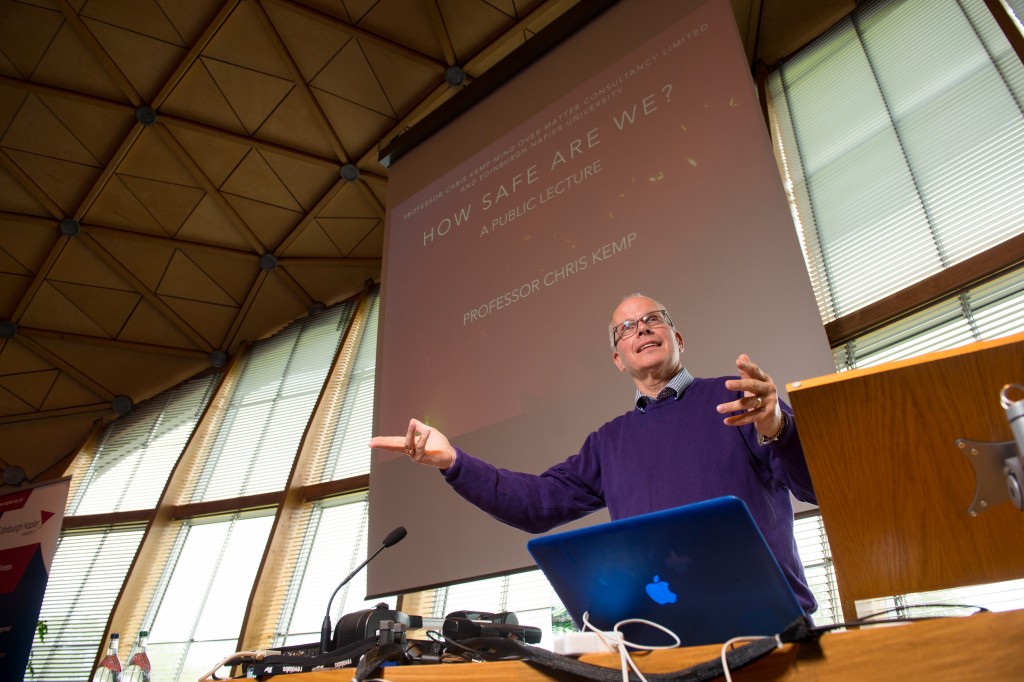Professor Chris Kemp is known primarily for his work in crowd management and his ceaseless endeavour to make events safer. As a key member of Yourope Event Safety Group (YES), Chris has been asked to speak on many occasions across the globe on aspects of crowd safety. He addressed the House of Commons Select Committee for Olympic Security on the merits of training for the 2012 Olympic Games, as well as the Royal Society of Medicine. Chris was employed by the HSE as their crowd expert for the London 2012 Olympic and Paralympic Games. Having worked in the music industry as a promoter and venue manager for over a decade before entering academia, he has a wide range of practical knowledge as well as an academic underpinning to his work with Mind Over Matter Consultancy.
The majority of MOM’s globe-spanning work focusses on three main aspects: the development and delivery of bespoke courses for major festivals, venues and events companies; consultancy projects most of which focus on unusual issues and problems; and leadership and management for a range of clients. In this article Chris discusses the virtues of ‘immersive learning’ for festival employees.
Immersive learning for event managers, security personnel and those dealing with crowd and crisis management was thrown into sharp relief recently with the roller coaster incident at Alton Towers. In the previous four weeks Mind Over Matter had provided scenario-based courses for a range of events, festivals and venues across the UK including the National Arenas Association. Part of this learning involved an incident in a theme park where a roller coaster had derailed in a tunnel. The exercise invited participants, playing various roles, to solve the issues by working together in teams. After the Alton Towers incident I received a heap of e-mails stating how uncanny and timely this type of training had been.
Immersive learning is a technique that may be used as part of all training activities, giving those participating a real life, real time scenario based learning activity. This enables them to be put under pressure to perform in situations that may occur at real live events. The delivery of tabletops is a good substitute for such activity but unless you get people to feel, see and act in situations they cannot replicate this in situ. Reiteration is absolutely key in such activities. As well as the activity, the feedback, refection time and running of parallel activities helps everyone to learn from both good practice and mistakes. Using small groups of 4 – 6 people helps those in the situation to run ideas past others, formulate solutions and then to apply the solutions in practice without being afraid of the consequences. However, if the consequences are negative or time sensitive the reflection and feedback given those involved time to think about alternatives and other solutions which may be just as effective and efficient. Playing with the time is another positive element of immersive learning as you can use it to ramp up the pressure on individuals or groups or increase the time given for an activity to enable those new to a team sufficient time to make decisions dependent on the situation, context and environment.
Immersive learning is only trumped by the full-scale exercise. Coming up against a terrorist attack exercise in the rolling hills of Buckinghamshire was frightening to behold as all of the services, as well as counter terrorism police and the military were involved in a scenario in real time, using all of the services required including local authorities and other parties that would be involved in such an incident. The Australian Police regularly use these full-scale exercises in both stadia and at green filed sites since their terrorism alert became heightened. This helps them to plan for any event.
In many cases today such activities including immersive learning and the full-scale exercise are thought to be costly and with little value other than if an incident takes place. However, they are much further reaching than this. Participants feel that such exercises help them with the softer skills needed for incident planning and evaluation. These include teamwork, decision-making, problem solving, negotiation and communication, which are all improved by this type of activity.
However, these activities are costly to put together and can take up to eighteen months to orchestrate. As they are true to life, those delivering them need to have a vast knowledge of the event, security, crowd management or terrorism activity which is taking place and if possible have had experience of incident and crisis management planning for the area in question. The resources must be first class, the presentations used (if any) should be fluid and changeable, and the activity must be managed by those that can make quick decisions if things are not going to plan.
Feedback for this type of exercise is always excellent as participants take away a range of teachings back to the workplace and utilise them in their everyday business activities, as well as in crisis and emergency situations. One piece of feedback recently received stated: “An intense learning experience which will captivate you and leave you wanting to learn more”, showing the enthusiasm with which such training days are received.
Having provided these types of training events for the past six years, and seeing other companies create and deliver some fantastic real life scenarios, it is clear that they benefit immensely those working at all kinds of event and venues across the world. As an advocate of such immersive learning I can recommend this type of learning to anyone who is interested in really getting to grips with issues taking place at their event or venue.

